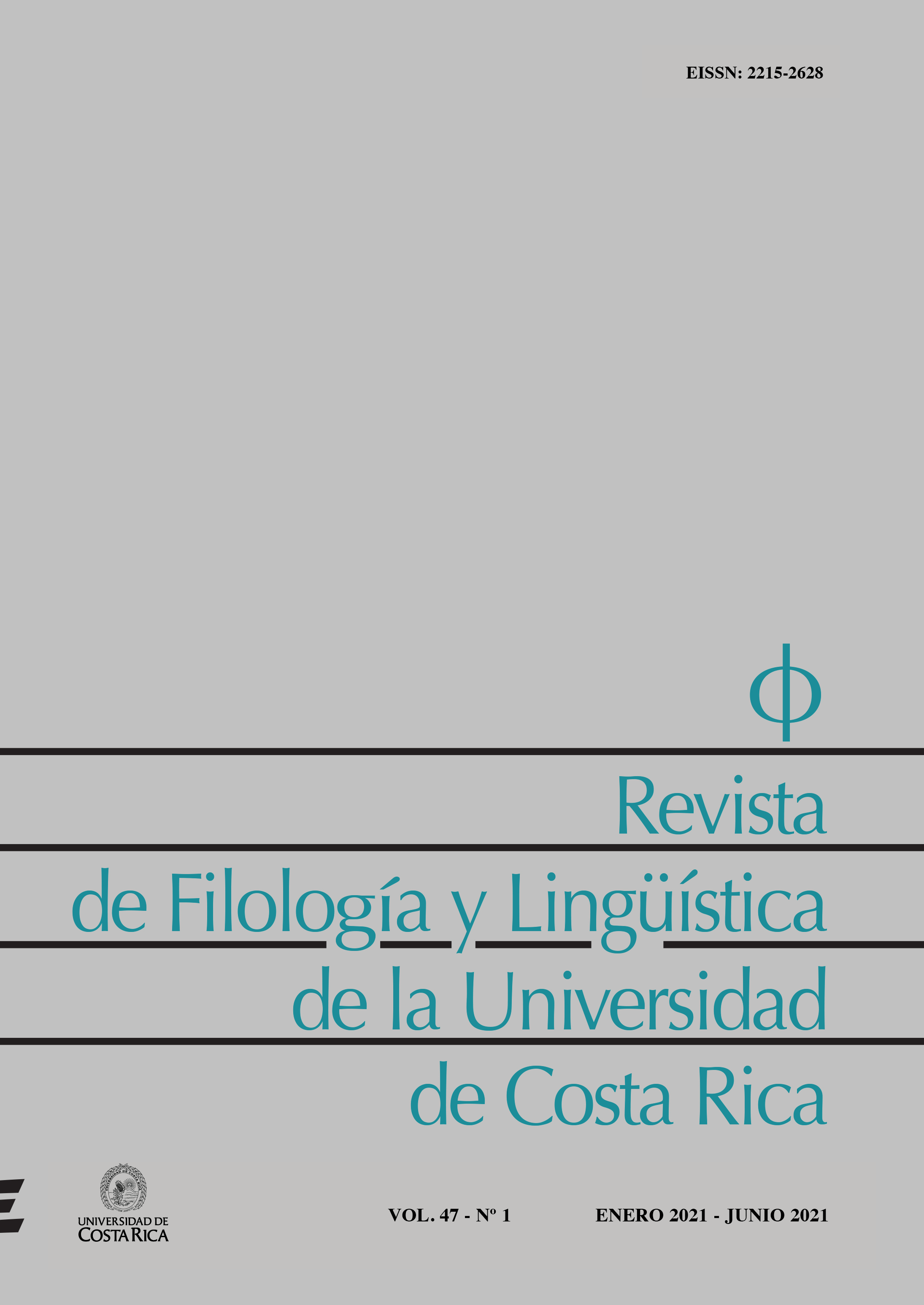Abstract
This paper characterizes some of the central aspects in Idle Days in Patagonia (1893), by Anglo-Argentine naturalist and writer William Henry Hudson. In this work, the author recalls his stay in the Patagonia territory between 1870 and 1871. We aim to examine the work from the perspective of Imagology, and characterizing the subject’s relation con his self-image and the hetero-image that is developed in the text. Due to the relation with space, idleness is conceived as a productive intellectual activity that shapes a representation of the semimystic link with nature. The focus of our interest is the convergence between identity and alterity in the Argentina rural environment of the 19th century: the development of Hudson’s strategies of swindling his Argentine identity in a text written for English readers, along with a search for empathy with the indigenous alterity in absentia. We also aim to discuss the genre statute in a text as ambiguous as Idle Days in Patagonia, which, like its author, escapes classifications. Finally, we briefly compare this work with an unfinished work by Eduardo Holmberg, due to how the stance each author takes in their respective literary fields enlightens the manners of imaginary representation of the Patagonia space.
References
Abraham, C. (2015). La literatura fantástica argentina en el siglo XIX. Buenos Aires: Fundación Ciccus.
Ara, G. (1954). Guillermo E. Hudson. El paisaje pampeano y su expresión. Buenos Aires: Universidad de Buenos Aires.
Barnard, R. (2002). Breve historia de la literatura inglesa. Madrid: Alianza Editorial.
Barrenechea, A. M., Jitrik, N. y Rest, J. (1981). La crítica literaria contemporánea. Antología. (Vol. 1). Buenos Aires: Centro Editor de América Latina.
Beller, M. y Leerssen, J. (Eds.). (2007). Imagology: The cultural construction and literary representation of national characters. Amsterdam: Rodopi.
Bocco, A. A. (2018). Reescribir las fronteras para inscribir los conflictos socioculturales de la contemporaneidad. Cuadernos de Humanidades, 29, 43-57.
Bracamonte, J. (2003). Secuencia para una relectura de la Cuestión India en el siglo XIX argentino. CiberLetras, (10). Recuperado de http://www.lehman.cuny.edu/ciberletras/v10/bracamonte.htm
Ford, F. M. (2010). Amistades literarias. Santiago de Chile: Ediciones Universidad Diego Portales.
Franco, J. (1980). Introducción. En G. E. Hudson, La tierra purpúrea y Allá lejos y hace tiempo (pp. IX-XLV). Caracas: Biblioteca Ayacucho.
Giacchino, A. (1995). Breve biografía del naturalista argentino Eduardo Ladislao Holmberg (1852-1937). En H. L. López, A. M. Miquelarena y J. Ponte (Eds.), Ictiólogos de la Argentina: Eduardo Ladislao Holmberg (pp. 36-39). Recuperado de http://sedici.unlp.edu.ar/bitstream/handle/10915/15846/Documento_completo.pdf?sequence=1&isAllowed=y
Gómez, L. (2009). Iluminados y tránsfugas. Relatos de viajeros y ficciones nacionales en Argentina, Paraguay y Perú. Madrid-Frankfurt: Iberoamericana-Vervuert.
Gómez, L. y Castro-Klarén, S. (Eds.). (2012). Entre Borges y Conrad. Estética y territorio en William Henry Hudson. Madrid-Frankfurt: Iberoamericana Vervuert.
Holmberg, E. L. (2008). Excursiones bonaerenses por Eduardo Holmberg. [Comentarios de Juan Carlos Chebez y Bárbara Gasparri]. Buenos Aires: Albatros.
Holmberg, L. (1952). Holmberg, el último enciclopedista. Buenos Aires: Francisco A. Colombo.
Hudson, W. H. (1893). Idle Days in Patagonia. London: Chapman & Hall.
Hudson, W. H. (1895). The Naturalist in La Plata. London: Chapman & Hall.
Hudson, W. H. (1918). Far Away and Long Ago. A History of My Early Life. London: Dent & Sons.
Hudson, W. H. (1920). El Ombú. London: Duckworth & Co.
Hudson, W. H. (1922). The Purple Land. Being the Narrative of one Richard Lambs Adventures in the Banda Orientál, in South America, as told by Himself. London: Duckworth & Co.
Hudson, W. H. (1937). A Crystal Age. New York: E.P. Dutton.
Hudson, W. H. (1937). Green Mansions. New York: Alfred A. Knopf.
Hudson, W. H. (2018). Aves pamperas (D. Gallegos, trad.). Recuperado de https://studylib.es/doc/8307534/aves-pamperas---folklore-tradiciones
Jurado, A. (1988). Vida y obra de W.H. Hudson. Buenos Aires: Emecé.
Korte, B. (2014). Against Busyness: Idling in Victorian and Contemporary Travel Writing. En M. Fludernik y M. Nandi (Eds.), Idleness, Indolence and Leisure in English Literature (pp. 215-234). London: Palgrave Macmillan.
Leerssen, J. (2016). Imagology: On using ethnicity to make sense of the world. Iberic@al, (10), 13-31. Recuperado de http://iberical.paris-sorbonne.fr/wp-content/uploads/2017/02/Pages-from-Iberic@l-no10-automne-2016-Final-2.pdf
Lejeune, P. (1994). El pacto autobiográfico y otros estudios. Madrid: Megazul-Endymion.
Liedke, H. (2018). The Experience of Idling in Victorian Travel Texts, 1850-1901. London: Palgrave Macmillan.
Livon-Grosman, E. (2001). Lo abierto y lo cerrado: el espacio patagónico en la literatura de viaje. CiberLetras, (5). Recuperado de http://www.lehman.cuny.edu/ciberletras/v05/grosman.html
Livon-Grosman, E. (2003). Geografías imaginarias. El relato de viajes y la construcción del espacio patagónico. Rosario, Argentina: Beatriz Viterbo.
Lotman, I. M. (1996). La semiosfera I. Semiótica de la cultura y del texto. (D. Navarro, trad.). Recuperado de https://www.academia.edu/38723943/La_semiosfera_I_Semi%C3%B3tica_de_la_cultura_y_del_texto?auto=download
Morillas Ventura, E. (2005). Sensaciones y sensibilidad en Días de ocio en la Patagonia. En La literatura hispanoamericana con los cinco sentidos (457-464). Recuperado de https://ruc.udc.es/dspace/bitstream/handle/2183/11390/CC-78%20art%2052.pdf?sequence=1&isAllowed=y
Olney, J. (1972). Metaphors of Self. The Meaning of Autobiography. New Jersey: Princeton University Press.
Piglia, R. [Firmado como Emilio Renzi]. (1978). Hudson: ¿Un Güiraldes inglés? Punto de Vista, (1), 23-24.
Pratt, M. L. (2011). Ojos imperiales. Literatura de viajes y transculturación. México: Fondo de Cultura Económica.
Rotker, S. (1999). Cautivas. Olvidos y memoria en la Argentina. Buenos Aires: Ariel.
Sarmiento, D. F. (1995). Facundo. Barcelona: Altaya.
Sartre, J. P. (2005). Lo imaginario. Psicología fenomenolófgica de la imaginación. Buenos Aires: Losada.
Selnes, G. (2003). The Metaphoricity of Shipwrecks; or, Exile (not) Considered as One of the Fine Arts. CiberLetras, (10). Recuperado de http://www.lehman.cuny.edu/ciberletras/v10/selnes.htm
Szurmuk, M. (2001). Visto, oído, recordado: William Henry Hudson viaja a la Patagonia. Ciberletras, (5). Recuperado de http://www.lehman.cuny.edu/ciberletras/v05/szurmuk.html
The Editors of Encyclopaedia Britannica. (2016). Pastoral Literature. Encyclopaedia Britannica. Recuperado de https://www.britannica.com/art/pastoral-literature
Thomassen, B. (2009). The Uses and Meanings of Liminality. International Political Anthropology, 2(1). 5-27.
Tomalin, R. (1982). W.H. Hudson. A Biography. London: Faber and Faber.
Torre, C. (2003). Los relatos viajeros. En J. Schvartzman (Dir.), Historia crítica de la literatura argentina. La lucha de los lenguajes (Vol. 2, pp. 517-538). Buenos Aires: Emecé.
Velázquez, L. H. (1963). Guillermo Enrique Hudson. Buenos Aires: Ediciones Culturales Argentinas.
Viñas, D. (1982). Indios, ejércitos y frontera. México: Siglo XXI.
Wilson, J. (2015). Living in the Sound of the Wind, A Personal Quest for W.H. Hudson, Naturalist and Writer from the River Plate. London: Constable.

